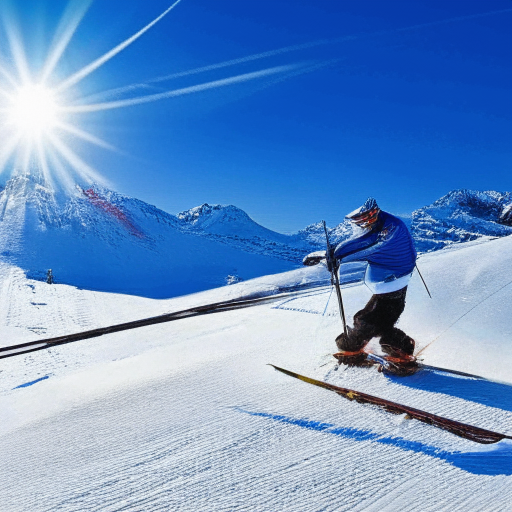Safeguarding Your Vision: Essential Strategies to Understand and Prevent Snow Blindness
As the enchanting winter season transforms our surroundings into stunning white wonderlands, it is crucial to recognize the potential threats that accompany outdoor activities in snowy environments. One of the most noteworthy dangers is snow blindness, a temporary yet intensely painful condition resulting from prolonged exposure to ultraviolet (UV) rays that bounce off the snow. This detailed blog post delves into the complex science of snow blindness, outlines the visual impacts of sunlight interacting with snow, and offers actionable recommendations for effective prevention, accurate diagnosis, and appropriate treatment. By understanding the root causes of this condition and adopting preventive measures, we can fully enjoy the beauty of winter while keeping our eye health secure.

Understanding Photokeratitis: Medical Insights and Causes of Snow Blindness
The medical terminology for snow blindness is photokeratitis, which denotes a temporary injury to the cornea, the outermost layer that shields the eye. This painful condition primarily arises from excessive exposure to high levels of ultraviolet (UV) radiation, especially from rays reflected off snow-covered surfaces. Intense sunlight, particularly at higher elevations where the atmosphere is thinner, can lead to significant discomfort and, in some cases, enduring vision problems. While snow blindness generally resolves on its own within a short timeframe, having a comprehensive understanding of its causes is essential for implementing effective prevention and management strategies to safeguard your sight.
Analyzing the Impact of Sunlight on Snowy Environments and Your Vision
To grasp the complexities of snow blindness, it is vital to explore how sunlight interacts with the snow's surface. Sunlight traverses the atmosphere, encompassing a range of wavelengths, including potentially harmful ultraviolet radiation. When these rays strike snow-covered landscapes, the unique reflective characteristics of snow can bounce back as much as 80% of these UV rays, significantly increasing exposure levels. This pronounced reflection effect is especially evident in elevated areas, where the atmosphere’s ability to filter UV radiation is considerably reduced. Consequently, the eyes can quickly become overwhelmed by excessive UV exposure, resulting in potential damage to the cornea, conjunctiva, and other crucial components of the eye.
Recognizing the Symptoms of Snow Blindness for Timely Intervention
The symptoms of snow blindness typically manifest several hours after one has been exposed to intense UV light. Although the intensity can vary among individuals, common indicators include:
Eye discomfort and pain: Many people report a gritty sensation, akin to having foreign substances in their eyes.
Redness and swelling: Eyes may appear bloodshot, and eyelids can swell, showing signs of inflammation.
Watery eyes: Increased tearing occurs as the eyes attempt to flush out irritants and alleviate discomfort.
Blurry vision: Tasks requiring sharp eyesight, like reading or driving, may become difficult due to distortion.
Sensitivity to light: Heightened sensitivity to light, known as photophobia, often coincides with headaches.
Sensation of halos: Some individuals might see bright rings or halos around light sources, which can enhance visual confusion.
Practical Strategies to Prevent Snow Blindness and Shield Your Eyes
When it comes to protecting your eyes from the detrimental effects of UV radiation, adopting preventive measures is far more effective than seeking remedies after the fact. Here are several practical tips to help you lower the risk of snow blindness:
Wear appropriate eyewear: Always opt for goggles or sunglasses that block 100% of UV rays when engaging in snowy activities. Choose eyewear marked with UV400 or 100% UV protection for optimal safety.
Select wraparound styles: Look for sunglasses or goggles that wrap around the sides of your face, providing comprehensive protection against both direct sunlight and side UV exposure.
Utilize wide-brimmed hats: Hats with wide brims or neck flaps can offer additional shade, significantly minimizing UV radiation exposure to your eyes.
Check the UV Index: Prior to outdoor activities, check the local UV Index, which forecasts daily UV exposure levels. Be cautious and limit sun exposure during peak hours, typically from 10 AM to 4 PM.
Apply sunscreen: Although it may seem unrelated, applying sunscreen around your face and eyes can significantly reduce UV radiation exposure, enhancing your overall protection.
Take breaks indoors: If you plan to spend extended periods in snowy environments, make it a habit to take regular breaks indoors. This practice allows your eyes to rest and recover from excessive bright light exposure.
Effective Relief and Recovery Techniques for Snow Blindness Symptoms
If you begin to experience the symptoms of snow blindness despite taking precautions, several strategies can help relieve discomfort and facilitate recovery:
Seek shade: Immediately find a darkened area or go indoors to protect your eyes from further UV exposure.
Remove contact lenses: If you wear contact lenses, take them out to prevent additional irritation and to allow your eyes to heal.
Apply cold compresses: Gently placing a cold, damp towel over closed eyes can effectively soothe discomfort and reduce swelling.
Use artificial tears: Over-the-counter artificial tears can provide temporary relief, keeping your eyes moisturized and alleviating dryness associated with snow blindness.
Avoid bright lights: Limit exposure to intense light sources, including screens and overhead lights, to lessen the impact of photophobia during recovery.
Rest your eyes: Engage in minimal visual strain activities, avoiding reading or screen time, to provide your eyes with the essential time they need to heal.
When to Consult a Healthcare Professional for Snow Blindness
In most instances, symptoms of snow blindness will start to diminish within 24 to 48 hours as the cornea heals. However, it is crucial to seek medical assistance if symptoms worsen or linger, as delays in treatment could lead to complications or secondary infections.
Experiencing snow blindness can greatly diminish the enjoyment of winter activities, but with the right knowledge and preventive steps, we can significantly reduce the risk while appreciating the beauty of snowy landscapes. Stay informed about UV radiation levels, take regular breaks in shaded areas, and always wear protective eyewear. If you encounter any symptoms, seek relief quickly and consult a healthcare professional if necessary. By prioritizing eye safety, you can fully immerse yourself in the winter wonderland and create cherished memories without compromising your vision. Enjoy your winter adventures with caution!
The post Snow Blindness: Understanding Its Causes and Effects appeared first on Survival Bite.
The Article Snow Blindness Causes and Effects Explained Was Found On https://limitsofstrategy.com


This is such an important reminder as we embrace winter activities! I’ve had a close call with snow blindness when I went skiing last year and didn’t wear the proper eyewear. It was an eye-opener—literally! Your insights on UV exposure bouncing off the snow are so valuable, and I love how you connect the science behind it with practical prevention tips.
This is such an important reminder as we embrace winter activities! I’ve had a close call with snow blindness when I went skiing last year and didn’t wear the proper eyewear. It was an eye-opener—literally! Your insights on UV exposure bouncing off the snow are so valuable, and I love how you connect the science behind it with practical prevention tips.
It sounds like you had quite the experience on your first skiing trip! That gnarly headache and light sensitivity must have been tough to deal with, especially when you just want to enjoy the slopes. It’s wild how we often underestimate the power of UV exposure, especially in environments like the snow where the sun’s rays bounce around.
It sounds like you had quite an intense experience with snow blindness. It’s surprising how easily it can happen, especially when we forget that UV rays can be just as strong in winter as in summer, thanks to the snow reflecting them. Many people overlook eye protection during winter activities, focusing instead on other gear.
This is such an important topic, especially as we all look forward to outdoor winter activities! I appreciate how you highlight the often overlooked risk of snow blindness. It’s fascinating how something that appears so beautiful, like a snowy landscape, can also pose serious health threats if we’re not properly prepared.
What an enlightening read! I’ve always admired the breathtaking beauty of snowy landscapes during winter, but I must admit that I didn’t give much thought to the potential hazards like snow blindness. Your detailed examination of the underlying science behind photokeratitis really opened my eyes—pun intended! It’s fascinating how the very same snowflakes that create a picturesque scene can also pose such a serious risk to our vision.
It’s great to hear how the article resonated with you. The contrast between the beauty of snowy landscapes and the potential dangers like snow blindness is definitely striking, isn’t it? It’s one of those situations where nature’s allure can hide some serious risks.
I’m glad you found it enlightening. It’s intriguing how nature’s beauty can sometimes mask potential dangers, isn’t it? Snow blindness really is one of those things people might overlook when they’re admiring a winter wonderland.
This post really highlights an often-overlooked aspect of winter fun! I remember my first ski trip, where I forgot to wear my sunglasses and paid the price with a day of painful glare. It’s fascinating how something as simple as UV exposure can lead to photokeratitis, yet it’s so easy to forget when we’re wrapped up in the beauty of a snowy landscape. The tips for prevention are spot on—polarized eyewear is a game changer!
I really appreciate how you highlighted the risks of snow blindness, especially since many people tend to overlook it while enjoying the beauty of snowy landscapes. During a recent ski trip, I was completely caught up in the scenery and forgot to wear sunglasses until my eyes started to feel that familiar burn. It’s a harsh reminder of how important it is to protect our vision, even in a playful winter wonderland!